The Hydrogen Promise: A Clean Energy Revolution on the Horizon?
Imagine a world powered not by fossil fuels releasing greenhouse gases, but by a clean, abundant element that produces only water when used. That element is hydrogen. For decades, scientists and engineers have envisioned hydrogen as a cornerstone of a sustainable energy future. Now, with increasing urgency to combat climate change and rapid advancements in technology, that vision is beginning to take shape. But what does this mean for you, the investor looking for opportunities in this transformative shift?
We’re on the cusp of what many are calling the “hydrogen economy.” It’s a complex ecosystem involving everything from how hydrogen is produced, stored, and transported to how it’s finally converted into usable energy. Unlike traditional energy sources tied to specific geographical deposits, hydrogen can potentially be produced anywhere, offering profound implications for energy security and decentralization. However, realizing this potential is no small feat. It requires massive investment, technological breakthroughs, and supportive policies.
This article aims to guide you through the fascinating world of hydrogen investing, particularly focusing on the most environmentally friendly form: green hydrogen. We’ll explore the immense potential, the significant challenges, and the key players vying for leadership in this emerging sector. Think of us as your guide, breaking down intricate concepts into understandable insights, helping you build a solid foundation for evaluating opportunities.
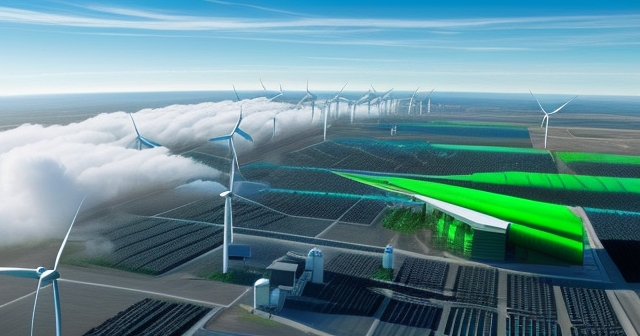
Before we dive into investment specifics, it’s crucial to understand that not all hydrogen is created equal. The color designation typically refers to the method used to produce it, and this method dictates the environmental footprint. This is a critical distinction for understanding the “clean” energy aspect of the hydrogen market.
Let’s look at the primary colors you’ll encounter:
- Grey Hydrogen: This is the most common form produced today. It’s generated from natural gas (methane) through a process called steam-methane reforming (SMR). While producing hydrogen, SMR also releases significant amounts of carbon dioxide (CO2) into the atmosphere. Think of it as a transitional fuel that still contributes to greenhouse gas emissions.
- Blue Hydrogen: Like grey hydrogen, blue hydrogen is also produced from natural gas via SMR. The key difference is that the CO2 emissions generated during production are captured and stored underground through Carbon Capture and Storage (CCS) technology. This makes blue hydrogen “cleaner” than grey, as the CO2 is prevented from entering the atmosphere, but it still relies on fossil fuels and the effectiveness of CCS.
- Green Hydrogen: This is the star of the show for a truly sustainable future. Green hydrogen is produced through a process called electrolysis, where water (H2O) is split into hydrogen (H2) and oxygen (O2) using electricity. The crucial part is that the electricity used for this electrolysis comes from renewable sources like solar, wind, or hydro power. Because the process uses only water and renewable energy, it produces zero greenhouse gas emissions – only oxygen is released.
- Other Colors: You might hear about other colors like Pink (nuclear power used for electrolysis), Brown/Black (coal gasification, highly polluting), Turquoise (methane pyrolysis producing solid carbon instead of CO2), and White (naturally occurring geological hydrogen). However, green hydrogen is the primary focus for decarbonization goals.
When we discuss the “hydrogen revolution” and its investment potential, we are predominantly talking about the shift towards clean hydrogen, with green hydrogen being the ultimate goal due to its truly zero-emission profile. Understanding these distinctions is fundamental because the market potential and environmental benefits are vastly different depending on the production method.

The excitement surrounding green hydrogen stems from its unique ability to decarbonize sectors that are difficult to electrify directly using renewable energy. While electric vehicles are excellent for passenger transport, industries like heavy-duty trucking, shipping, aviation, steel production, ammonia synthesis, and cement manufacturing often require energy density or sustained power that batteries currently struggle to provide efficiently or economically. This is where hydrogen shines.
Hydrogen can store and transport large amounts of energy. It can be used in fuel cells to generate electricity (producing only water as a byproduct) or burned directly (again, producing mainly water vapor, though some NOx emissions can occur at high temperatures). This versatility makes it a powerful tool in the fight against climate change.
Consider a large industrial plant that requires immense heat for processes like steelmaking. Replacing fossil fuels entirely with electricity might not be feasible due to infrastructure limitations or the sheer energy requirement. However, using green hydrogen as a fuel alternative can drastically cut carbon emissions. Similarly, long-haul trucks require frequent refueling and carry heavy loads, making battery weight and charging times a significant hurdle. Hydrogen fuel cells offer a promising solution with faster refueling and potentially lighter systems.
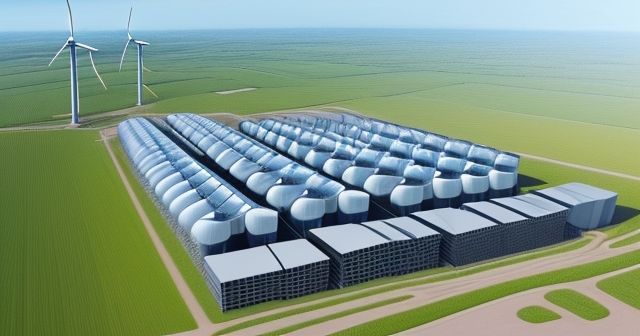
Furthermore, green hydrogen can act as an energy storage medium. When renewable energy production (like solar or wind) exceeds demand, the surplus electricity can be used to produce green hydrogen. This hydrogen can then be stored and used later to generate electricity when demand is high or renewable output is low, effectively helping to balance the grid and overcome the intermittency challenge of renewables.
This combination of zero-emission use, versatility across difficult-to-decarbonize sectors, and energy storage potential is why green hydrogen is seen as a critical piece of the future energy puzzle. It’s not just another clean energy source; it’s a bridge to a fossil-fuel-free future for significant parts of the global economy.
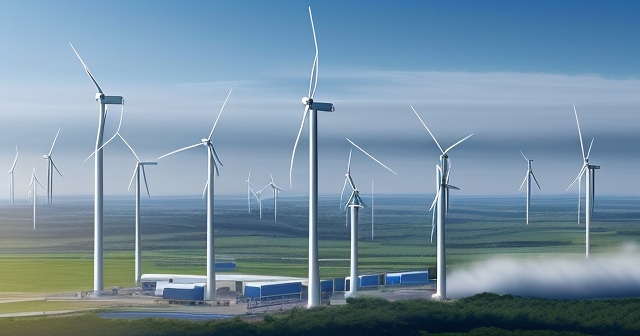
The potential scale of the hydrogen market is staggering, reflecting its broad applicability and the global push for decarbonization. While still in its early stages compared to established energy markets, projections paint a picture of exponential growth over the coming decades.
| Market Component | Projected Value by 2030 |
|---|---|
| Global clean hydrogen market | Up to $11 trillion |
| Hydrogen generation market | $317 billion |
Various reports estimate the potential market size in the trillions of dollars. Some forecasts suggest the global clean hydrogen market could reach values up to $11 trillion or a hydrogen generation market value of $317 billion by 2030, growing at substantial Compound Annual Growth Rates (CAGRs). These are not just arbitrary numbers; they reflect the anticipated deployment of hydrogen technologies across numerous industries, spurred by both environmental necessity and economic opportunity.
Globally, a significant pipeline of hydrogen projects is being proposed, signaling strong interest and intent. Reports indicate that around $240 billion worth of hydrogen projects have been proposed worldwide. However, a crucial point for investors is the distinction between proposed projects and those reaching Final Investment Decision (FID). Currently, only about 10% of these proposed projects have reached FID, meaning the vast majority are still in the planning or evaluation phase. This highlights both the massive potential yet also the inherent risk and uncertainty in translating ambition into reality.
Geographically, different regions are taking leadership roles. The United States, with strong policy support, is a major focal point. Europe is actively developing hydrogen strategies and infrastructure. Countries in Asia like Japan and South Korea are heavily investing in hydrogen as part of their energy transitions. Canada and Australia are exploring their potential as hydrogen producers and exporters. This global distributed effort underscores the worldwide relevance of this technology.
| Region | Key Focus |
|---|---|
| United States | Strong policy support |
| Europe | Developing hydrogen strategies |
| Japan & South Korea | Heavily investing in hydrogen |
| Canada & Australia | Exploring potential as producers |
Understanding these market dynamics is essential. The projections are exciting, but the gap between proposals and FIDs reminds us that this is an emerging market facing real-world deployment challenges. It’s a market characterized by high growth potential but also significant execution risk.
No energy transition of this magnitude happens without significant support, and the burgeoning clean hydrogen market is heavily reliant on favorable government policies and substantial corporate investment. These catalysts are crucial for bridging the economic gap between nascent clean technologies and established fossil fuel industries.
In the United States, key legislation is providing powerful incentives. The Inflation Reduction Act (IRA) introduced a landmark clean hydrogen production tax credit (known as 45V). This credit can provide up to $3 per kilogram for clean hydrogen production, based on lifecycle greenhouse gas emissions. For green hydrogen produced with zero or near-zero emissions, this credit significantly lowers the effective cost, making it more competitive with grey hydrogen.
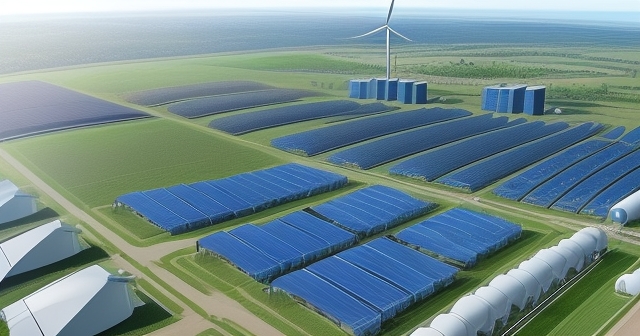
Think of this tax credit as a strong financial push, making previously uneconomical green hydrogen projects viable. It’s designed to kickstart production and encourage investment in electrolyzer capacity and renewable energy infrastructure dedicated to hydrogen.
Complementing the IRA is the Bipartisan Infrastructure Law, which allocated substantial funding for establishing regional clean hydrogen hubs ($7 billion) and grants for hydrogen refueling infrastructure ($623 million). These initiatives aim to build the necessary ecosystem – production centers linked by pipelines or transport to end-users like industrial zones or transportation corridors – to enable large-scale adoption.
Beyond the US, similar policy initiatives are being pursued globally, including in Europe, Canada, and Australia, often involving subsidies, grants, and regulatory frameworks designed to accelerate hydrogen deployment. These policies signal a strong political commitment to developing the hydrogen economy.
Alongside government support, corporate investment is also surging. Energy majors, industrial gas giants, and specialized technology companies are deploying significant capital into hydrogen projects. Companies like Air Products, Linde, and BP are investing billions in building production facilities and infrastructure. This corporate buy-in, leveraging existing expertise and balance sheets, is critical for bringing large-scale projects to fruition.
However, policy landscapes can shift, and the speed of implementation can vary. While the core IRA tax credit is seen as relatively stable due to its design, future political administrations could influence the pace of regulatory approvals or the allocation of infrastructure funding. This policy uncertainty adds another layer of complexity for investors.
While the potential is undeniable, the path to a widespread hydrogen economy, especially a green one, is paved with significant challenges. As an investor, understanding these hurdles is just as important as recognizing the opportunities.
Perhaps the most immediate challenge is the cost of production. Currently, green hydrogen is significantly more expensive to produce than grey hydrogen derived from cheap natural gas. Estimates suggest green hydrogen production costs around $5 per kilogram, compared to grey hydrogen at roughly $1.50 per kilogram. This cost disparity makes it difficult for green hydrogen to compete in markets where grey hydrogen is already used, absent strong subsidies or regulations penalizing carbon emissions.
| Hydrogen Type | Production Cost |
|---|---|
| Green Hydrogen | $5 per kilogram |
| Grey Hydrogen | $1.50 per kilogram |
The U.S. Department of Energy has set an ambitious target of reducing clean hydrogen costs to $1 per kilogram within a decade (“Hydrogen Shot”). Achieving this requires significant advancements in electrolyzer efficiency, reductions in renewable energy costs, and improvements in manufacturing scale. While progress is being made, it’s a steep climb.
The second major hurdle is infrastructure. A robust hydrogen economy requires entirely new infrastructure for storage, distribution, and refueling. This includes pipelines to transport hydrogen over long distances, storage facilities (which can be complex as hydrogen is a very light molecule), and refueling stations for vehicles. Building this infrastructure requires massive upfront capital investment and careful planning to ensure it connects production sites with end-users. The current infrastructure is sparse, acting as a significant bottleneck to adoption.
There’s also the challenge of energy conversion losses. Producing hydrogen via electrolysis, storing it, and then converting it back to electricity using a fuel cell involves energy losses at each step. This can make the overall “well-to-wheel” efficiency lower than direct electrification using batteries in certain applications. While efficiency is improving, it’s a thermodynamic reality that needs to be considered, especially in applications where direct electrification is viable.
Finally, hydrogen faces competition, primarily from battery technology. For many applications, particularly passenger vehicles and shorter-haul transport, battery electric solutions are already mature, widely adopted, and rapidly improving. Hydrogen’s competitive edge is strongest in heavy-duty, long-range, or specific industrial applications where batteries are less suitable. Investors need to evaluate which applications hydrogen is truly best positioned to serve.
Macroeconomic factors also play a role. High interest rates and inflation have increased the cost of financing large infrastructure projects, including hydrogen facilities, potentially slowing down development and increasing the required return on investment.
Successfully navigating these headwinds requires a combination of technological innovation to lower costs, policy support to bridge the economic gap, and strategic investment in building the necessary infrastructure. It’s a complex puzzle, and the companies best positioned are those actively addressing these challenges.
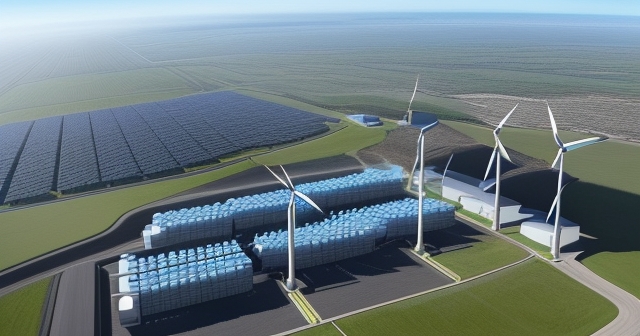
At the heart of the clean hydrogen ecosystem lie two crucial technologies: electrolyzers and fuel cells. Understanding these technologies is key to evaluating the companies operating in this space.
Electrolyzers are devices that use electricity to split water (H2O) into hydrogen (H2) and oxygen (O2). Think of it as the reverse of a fuel cell. There are several types of electrolyzer technologies, with the most common being:
- Alkaline Electrolyzers: A more mature technology, generally cheaper to build but less flexible in operation and slower to respond to changes in power input (which is important when pairing with intermittent renewables).
- Proton Exchange Membrane (PEM) Electrolyzers: Newer, more expensive, but more compact and capable of rapidly adjusting hydrogen production based on the available power input. This makes them well-suited for direct integration with variable renewable energy sources like solar and wind.
- Solid Oxide Electrolyzers (SOE): Operate at high temperatures, potentially offering higher efficiency, especially when integrated with heat sources like industrial waste heat or nuclear power. Still largely in development and demonstration phases for large-scale applications.
The performance, cost, and scalability of electrolyzers are critical for driving down the cost of green hydrogen production. Companies developing and manufacturing advanced electrolyzers are key players in this sector.
Fuel Cells, on the other hand, do the opposite: they convert hydrogen (and oxygen from the air) into electricity, heat, and water. They are essentially electrochemical devices that generate power without combustion, making them highly efficient and clean at the point of use. Like electrolyzers, there are different types of fuel cells, each suited for different applications:
- Proton Exchange Membrane (PEM) Fuel Cells: Operate at lower temperatures, making them suitable for applications requiring fast startup and dynamic power output, such as vehicles (cars, buses, trucks, forklifts) and backup power systems.
- Solid Oxide Fuel Cells (SOFC): Operate at high temperatures, offering high efficiency and fuel flexibility (can use natural gas, biogas, or hydrogen). Often used for stationary power generation in larger-scale applications.
- Phosphoric Acid Fuel Cells (PAFC) and Molten Carbonate Fuel Cells (MCFC): Other types used for stationary power, often in combined heat and power systems.
Fuel cells are the engine of the hydrogen economy’s end-use applications. Companies manufacturing fuel cells are positioned to benefit from the adoption of hydrogen in transportation, power generation, and industrial processes.
Many companies in the hydrogen space focus on one or both of these technologies, or they build integrated systems that combine production (electrolysis) and consumption (fuel cells) for specific applications or customers.
If you’re considering investing in the hydrogen theme, you have several avenues to explore. The most direct way is through investing in individual companies operating within the hydrogen value chain. However, given the early stage of the market and the associated risks, diversification is often a prudent strategy.
| Hydrogen Value Chain Component | Description |
|---|---|
| Hydrogen Producers | Manufacturers of hydrogen for industrial use or for the clean energy market. |
| Technology Providers | Designers and manufacturers of electrolyzers, fuel cells, or storage solutions. |
| Infrastructure Developers | Companies involved in building pipelines, storage facilities, or refueling stations. |
| End-Users/Integrators | Companies using hydrogen technology in their operations or products. |
Investing in individual stocks requires careful research into each company’s technology, financial health, project pipeline, partnerships, and market positioning. Some companies are pure-play hydrogen companies, meaning their business is almost entirely focused on hydrogen. These can offer high upside potential if the market develops rapidly but also carry higher risk due to their reliance on this single sector. Others are large, diversified companies with a significant hydrogen segment, offering potentially lower risk but also perhaps less direct exposure to the hydrogen growth story.
For investors seeking a more diversified approach, Exchange Traded Funds (ETFs) offer exposure to a basket of companies involved in the hydrogen sector. Examples include the Global X Hydrogen ETF (HYDR) and the Defiance Next Gen H2 ETF (HDRO). These ETFs hold shares of various companies across the hydrogen value chain, spreading risk across multiple players and segments of the market. Investing in an ETF can be a simpler way to gain exposure to the sector’s potential growth without having to pick individual stock winners and losers in this volatile market.
When considering any investment, whether individual stocks or ETFs, it’s crucial to understand the specific focus and holdings. Does it primarily focus on electrolyzers, fuel cells, production, or a mix? Does it include large, established companies or smaller, riskier pure-plays? Aligning the investment vehicle with your risk tolerance and investment goals is paramount.
The hydrogen landscape includes a diverse range of companies, from century-old industrial giants to innovative tech startups. Let’s look at some of the notable players often discussed in the context of hydrogen investing, based on the provided data. Remember, this is not exhaustive, nor is it an endorsement, but rather a snapshot of companies operating across different parts of the value chain.
- Air Products and Chemicals (APD): A leading global industrial gas company. APD is a major producer and distributor of hydrogen (mostly grey today) and is making significant investments in clean hydrogen projects globally. They are involved in large-scale blue hydrogen projects with CCS and massive green hydrogen facilities, leveraging their existing infrastructure and expertise in gas handling and distribution.
- Linde (LIN): Another major industrial gas company with extensive experience in hydrogen production, processing, storage, and distribution. Linde is actively pursuing clean hydrogen projects, including supplying clean hydrogen for industrial use and developing hydrogen refueling infrastructure. Like Air Products, their existing asset base gives them a strong competitive position.
- Plug Power (PLUG): A pure-play hydrogen technology company focused on fuel cells and electrolyzers. Plug Power is a significant player in the hydrogen forklift market and is expanding into on-road vehicles, stationary power, and large-scale green hydrogen production projects. As a pure-play, its stock price is often more directly tied to the hydrogen sector’s progress and its ability to execute on ambitious growth plans.
- Bloom Energy (BE): Primarily known for its solid oxide fuel cells (SOFCs) used for on-site power generation, Bloom Energy is also involved in solid oxide electrolyzers (SOECs) for hydrogen production. Their technology can operate on various fuels, including hydrogen, offering flexibility. They are targeting industrial and commercial applications for both power generation and clean hydrogen production.
- Cummins (CMI): While primarily known for diesel engines, Cummins has a significant and growing New Power segment focused on hydrogen technologies, including both fuel cells and electrolyzers. They are partnering with other companies on major hydrogen projects and are looking to integrate hydrogen solutions into their traditional markets like commercial vehicles.
- BP (BP): A major integrated energy company increasingly investing in lower-carbon businesses, including hydrogen. BP is involved in developing hydrogen production facilities (both blue and green) and infrastructure, often leveraging its existing energy assets and customer base.
- FuelCell Energy (FCEL): Another pure-play focused on stationary fuel cell power plants. While their technology can use various fuels, they are positioning themselves for hydrogen-based power generation and carbon capture solutions. Their focus is primarily on larger, utility-scale or industrial applications.
- Ballard Power Systems (BLDP): A leading developer and manufacturer of PEM fuel cells, primarily focused on heavy-duty motive applications like buses, trucks, trains, and marine vessels. They are a key technology provider for transportation decarbonization using hydrogen.
Understanding where each company fits in the value chain and their specific technological focus is crucial for assessing their potential and the risks they face. Are they reliant on technology development, project execution, or market adoption by end-users? Are they diversified or pure-play?
Investing in emerging technology sectors like hydrogen requires a different lens than evaluating mature industries. Here’s what we suggest you look for when considering hydrogen stocks:
- Technology Leadership and Patents: Does the company possess cutting-edge technology (electrolyzers, fuel cells, storage) that is more efficient, cheaper to manufacture, or better suited for specific applications than competitors? Strong intellectual property can provide a significant competitive advantage.
- Project Pipeline and Execution: Look beyond announcements to projects that have reached Final Investment Decision (FID) and are under construction or operational. Execution capability – the ability to build and commission complex facilities on time and budget – is critical. Are they securing long-term contracts for hydrogen supply or technology sales?
- Partnerships and Customer Base: Who are they partnering with? Collaborations with large industrial players, energy companies, or established end-users (like automakers or utilities) can validate a company’s technology and open up market opportunities. A diverse and growing customer base indicates market traction.
- Financial Health and Funding: Developing and deploying hydrogen technology is capital-intensive. Does the company have a strong balance sheet? How are they funding their projects (debt, equity, government grants)? Are they burning cash, and do they have a clear path to profitability? Pure-play companies, especially, may require significant future funding rounds.
- Cost Reduction Strategy: How is the company planning to drive down costs? This could be through manufacturing scale-up, technological improvements, supply chain optimization, or strategic partnerships. The ability to reduce the cost of hydrogen or hydrogen technology is paramount for widespread adoption.
- Policy Tailwinds: How well is the company positioned to benefit from government incentives like the IRA tax credit or infrastructure funding? Understanding the nuances of these policies and a company’s eligibility is important.
- Management Team: Does the leadership team have the experience and vision to navigate this complex and rapidly evolving market?
Analyzing these factors will give you a more robust picture of a company’s potential success in the hydrogen market. Given the high level of risk, it’s often wise to start with a smaller allocation and gradually increase as the market and individual companies mature and demonstrate execution capability.
It might seem counterintuitive, but macroeconomics significantly impacts the development and investment appeal of the hydrogen sector. Like any capital-intensive industry, hydrogen projects are sensitive to the broader economic environment.
Interest Rates: Rising interest rates increase the cost of borrowing money. Hydrogen projects, especially large-scale production facilities or infrastructure build-outs, often require substantial debt financing. Higher interest expenses can reduce the project’s profitability and increase the hurdle rate required for investors to commit capital. This is a major reason why some proposed projects have been slow to reach FID in a higher interest rate environment.
Inflation: Inflation increases the cost of raw materials, labor, and equipment needed for hydrogen projects. This can lead to cost overruns and further erode project economics. Supply chain disruptions, which contributed to recent inflationary pressures, also affect the timely delivery of specialized components like electrolyzers and fuel cells.
These macroeconomic factors don’t negate the long-term potential of hydrogen, but they can slow down the pace of development and add cost pressures that companies must absorb or pass on (which is difficult in a competitive market). Companies with strong balance sheets or access to favorable financing (perhaps through government programs) are better positioned to weather these conditions.
Political Winds: The hydrogen market is heavily influenced by government policy, particularly related to climate change and energy transition. In countries like the US, where significant incentives have been enacted through specific legislation (like the IRA and Bipartisan Infrastructure Law), shifts in political administrations can introduce uncertainty. While core tax credits like the 45V under the IRA are designed to be long-lasting, regulatory implementation, permitting processes, and the speed of funding dispersal can be affected by political priorities.
For instance, a future administration less focused on climate action might slow down regulatory approvals for hydrogen projects or reduce funding for infrastructure grants, even if the underlying legislation remains. Conversely, continued or increased political support could accelerate growth.
Understanding these macroeconomic and political dynamics adds another layer of complexity to hydrogen investing. It’s not just about the technology and the companies; it’s also about the broader economic and political environment in which they operate.
The long-term outlook for clean hydrogen, particularly green hydrogen, remains compelling. As the world commits to deeper decarbonization, sectors that are hard to electrify will increasingly look for alternative clean fuels. Hydrogen, with its versatility and potential for large-scale energy storage, is well-positioned to fill this need. Technological advancements continue to drive down the costs of electrolyzers and fuel cells, and policy support is creating market demand and enabling projects.
However, it’s crucial to reiterate that this is still an emerging market. Investing in hydrogen stocks involves significant risks:
- Technology Risk: While the core technologies exist, further innovation is needed to reach cost parity and improve efficiency. There’s also the risk that alternative technologies (like advanced batteries or other synthetic fuels) could become more competitive for certain applications.
- Execution Risk: Building large, complex hydrogen projects is challenging. Delays, cost overruns, and technical issues can significantly impact project economics and company performance.
- Market Adoption Risk: While there’s potential demand, widespread adoption across industries and transportation sectors is not guaranteed. It depends on cost reductions, infrastructure availability, and regulatory mandates. Will industries make the switch from established processes? Will hydrogen vehicles gain traction?
- Policy Risk: As discussed, changes in government policy could alter incentives, regulations, and funding availability, impacting the economic viability of projects.
- Competition Risk: The sector is attracting many players, leading to intense competition, which could put pressure on pricing and profitability.
- Funding Risk: Many companies, especially pure-plays, may need to raise additional capital to fund their growth, which could dilute existing shareholders or be challenging in unfavorable market conditions.
Despite these risks, the potential reward is substantial for those companies that successfully navigate these challenges and contribute to building the hydrogen economy. The market forecasts, while ambitious, reflect a genuine need for clean energy solutions in hard-to-abate sectors.
As an investor, approaching the hydrogen sector with a long-term perspective is essential. Expect volatility and setbacks, but also recognize the potential for significant growth as the technology matures, costs decline, and infrastructure is built out. Diversification, thorough due diligence on individual companies, and staying informed about policy developments and technological progress are key strategies for investing in this potentially revolutionary energy source.
best green hydrogen stocksFAQ
Q:What are the main types of hydrogen and their environmental impact?
A:The main types are grey, blue, and green hydrogen. Grey hydrogen is the most common but polluting, blue hydrogen captures emissions but still uses fossil fuels, while green hydrogen is produced with renewable energy and has zero emissions.
Q:Why is green hydrogen considered important for the future?
A:Green hydrogen can decarbonize hard-to-electrify sectors, provides energy storage solutions, and supports balancing the grid with renewable energy sources.
Q:Which companies are leaders in the hydrogen market?
A:Some key players include Air Products, Linde, Plug Power, and BP, which are involved in hydrogen production, technology, and infrastructure development.

留言